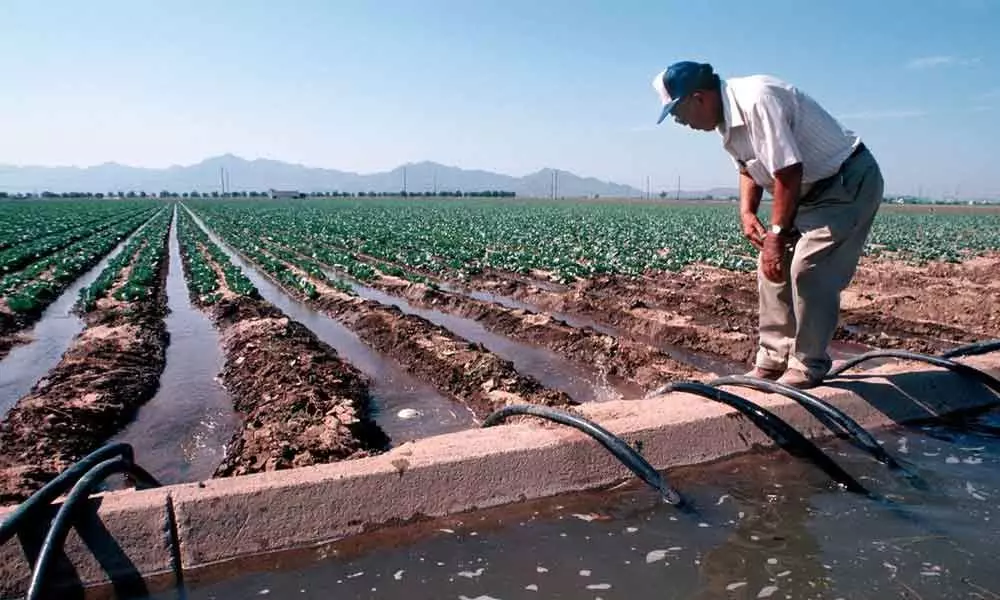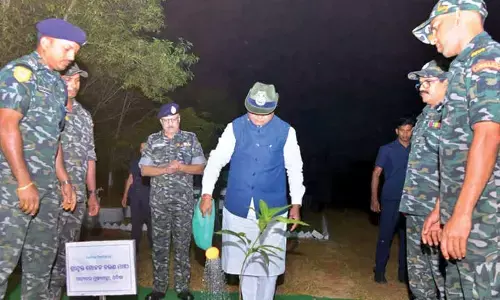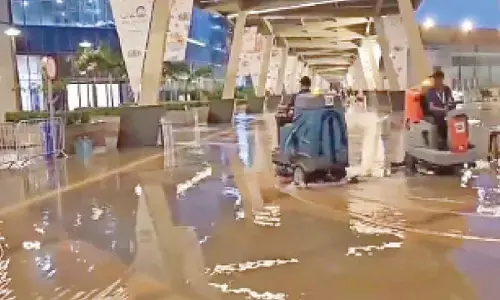Maintain, raise MSP to protect rivers

Maintain, raise MSP to protect rivers
The farmers are agitating for ensuring the continuation of Minimum Support Price (MSP) by legislation
The farmers are agitating for ensuring the continuation of Minimum Support Price (MSP) by legislation. One aspect of this demand is that they be assured of minimum remunerative prices for their produce. Another aspect is that MSP can become the instrument for saving our rivers.
According to the Consortium of the Indian Institutes of Technologies that made the Ganga River Basin Management Plan, the rivers are the best measure of the overall health of our environment. The condition of our land is reflected in the rivers through agricultural runoff.
The river water will become poisonous if the land has become poisonous due to the use of pesticides. The same will happen if the air is polluted. Maintenance of the health of the river requires that it has sufficient water just as maintenance of the health of a human being requires that her body has sufficient blood.
There are two claimants to the river waters. The first claim is of the farmers who want the water for irrigation. The second claim is from the river herself and the fishermen, fish, turtles, aquatic vegetation, and the human beings who want to enjoy the beauty of the river and taking a dip in her waters.
A river may be considered to be "alive" if she has enough water to provide for these uses. The government has to decide how much water may be given to the farmers and how much to the river, fishermen and turtles. The water allocated to the river is called environmental flows or e-flows for short. A number of studies have been made to assess the amount of e-flows that are required to keep the river alive. I will discuss these in relation to the Ganga although the same logic applies to all the rivers.
The International Water Management Institute (IWMI) based in Colombo, Sri Lanka, in which Government of India also has a stake, had suggested in 2006 that the rivers can be classified in various categories from "A" to "F," that is, from the best to the worst. IWMI recommended that 67 percent e-flows must be released if the status of the Ganga River was A-class, 44 percent if the status was B-class and 29 percent if status was C-class and so on.
It then classified the status of the Ganga in 2006 as C-class. Thus, 29 percent e-flows should be released even if the status was maintained as it were in 2006. However, the government has declared the Ganga as our National River in 2009. One would expect that we should raise her to A-class. In that case 67 percent water should be released as e-flows.
The High Court at Allahabad, in a matter that was argued by senior advocate Arun Kumar Gupta co-author of this article, passed an order in 2011 that 50% of the water should be released from Narora into the main channel as e-flows. Then, the World Wildlife Fund recommended in 2012 that 47% of the water should be released from Bithoor located upstream of Kanpur.
Then in the Consortium of Seven Indian Institutes of Technologies recommended that 55% e-flows should be released from the Pashulok Barrage at Rishikesh that diverts water to the Chilla hydropower project. The IITs had been asked by the Ministry of Environment to make a Ganga River Basin Management Plan. The IITs did not asses the amount of water to be released by the irrigation barrages in the plains. However, the Pashulok Barrage is located only 15 kilometres upstream from the Bhimgoda Irrigation Barrage at Haridwar.
Therefore, we can take the recommendations for Pashulok Barrage to be applicable for Bhimgoda Barrage as well. Then an article published in the scientific journal Current Science published by the Indian Institute of Science, Bengaluru, suggested that 50 to 60 percent e-flows should be released as e-flows into the Yamuna River. The Ministry of Water Resources also issued a report in 2015 which supported the recommendations of IITs that 55% e-flows should be released.
Now comes the catch. The Ministry of Jal Shakti, which was earlier called Ministry of Water Resources, issued and Notification in October 2018 requiring the release of 36 cubic meters per second (cumecs) water from the Bhimgoda Barrage in the non-monsoon period and 57 cumecs in the monsoon period.
For the downstream barrage at Bijnor, Narora and Kanpur, it stipulated the release of 24 to 48 cumecs water as e-flows. This works out to 6 percent or less of the water available at these locations. Thus, the Ministry has ignored order of the High Court which is still operative, and the numbers of the studies mentioned above and instead of requiring the release of about 50 percent e-flows, it has required the release of only 6 percent water.
The Ministry has bent backwards to supply water to the farmers; and ignored the river herself and the fishermen, fish, turtles, aquatic vegetation, and the human beings who want to enjoy the beauty of- and taking a dip in her waters.
We are confronted with a difficult trade-off between food security and environment. Our farmers are often misusing the canal water which is supplied to them on per-hectare land that is irrigated irrespective of the amount of water used. Therefore, they flood the fields more than what is necessary. The solution is that the farmers must be required to pay for the volume of the water that they use.
This will lead them to use the water judiciously and ensure food our security with the use of much less water. However, volumetric pricing will lead to an increase in the cost of production. This can be managed by making a proportionate increase in the Minimum Support Price. Then the farmer will have to pay more for the water, but he will get more money from the sale of the crop.
The ultimate burden will fall on us the city-dwellers who buy food grains from the market. We will have to pay higher prices for the grains since the Minimum Support Price would have been increased. The choice before us is whether we want cheap grains, or we want living rivers. We the people have to take a decision what is it that we want.
It seems to us that livelihood of the fishermen; life of fish, turtles and aquatic vegetation; and the happiness of us human beings who want to enjoy the beauty of the river and taking a dip in her waters is far more important and the price of food grains.
Therefore, the Ministry of Jal Shakti must not implement the High Court order for the release of 50 percent e-flows and follow the numbers of studies that point in that same direction. At the same time, the government must assess the burden of volumetric pricing of water on the farmers and raise MSP accordingly.
(With inputs from Arun Kumar Gupta)
(The writer is formerly Professor of Economics at IIM, Bengaluru)
















